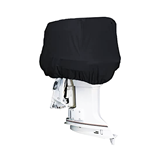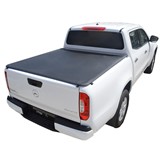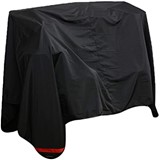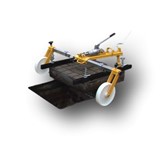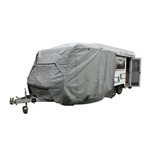Key Takeaways
- It covers the gaps in your standard policy. Your property insurance covers external events to your equipment (like fire, storm, or impact). Breakdown insurance covers the internal, mechanical, or electrical failure of your equipment (like a motor burning out).
- Modern equipment means modern risks. As industrial machinery becomes more complex and reliant on sensitive electronics, the risk of a costly internal failure from a power surge or control panel fault is increasing.
- The biggest risks are often electrical. A leading cause of claims is electrical motor burnout in critical equipment like compressors, pumps, and refrigeration units, which can cost tens of thousands of dollars to repair.
- Business interruption is a key benefit. A good policy doesn't just cover the repair cost; it can also cover the lost income and extra expenses you incur while your critical machinery is out of action.
- It’s essential for pressure equipment. If your business operates boilers or pressurised vessels, equipment breakdown insurance is a critical risk management tool, as a failure can be catastrophic and is almost always excluded from standard property policies.
- Maintenance is a condition of cover. Your maintenance logs are critical evidence in a claim. They prove a failure was sudden and accidental, not the result of neglect, which is essential for your policy to respond.
- Insure your profit, not just the part. The biggest loss from a breakdown is often lost income. Ensure your Business Interruption cover reflects your Gross Profit and a realistic replacement timeline (at least 12 months) to account for supply chain delays.
Introduction: The risk that hides in plain sight
As an owner or manager of an equipment-heavy business in Australia, you're diligent about risk. You have insurance to cover your property against fire, storms, and theft. But what happens if your most critical piece of machinery, the CNC machine, the production line motor, or the refrigeration compressor, grinds to a halt for no apparent external reason? A sudden mechanical or electrical failure can be just as devastating as a fire, yet it's a risk most standard business insurance policies will not cover.
In the complex industrial landscape of 2025, where equipment is more technologically advanced and expensive to repair than ever, understanding this gap in your coverage is critical. According to the Insurance Council of Australia, business interruption is a major financial threat, and an unexpected equipment failure is one of its leading causes. This article is a practical guide for Australian industrial business owners to help you understand what equipment breakdown insurance is, what it covers, and how to decide if it's an essential investment for protecting your cash flow and ensuring your business's continuity.
The crucial gap in your standard insurance coverage
The most common point of confusion is understanding how equipment breakdown insurance differs from your standard property or asset insurance. The distinction is simple but vital.
- Standard Property Insurance covers your assets from external events. Examples include:
- A fire in your workshop damages a machine.
- A forklift accidentally reverses into a control panel.
- A storm floods your facility and ruins a motor.
- Equipment Breakdown Insurance covers your assets from internal failure. Examples include:
- The internal motor of a machine spontaneously burns out.
- A power surge from the grid destroys a sensitive electronic control board.
- A bearing seizes, causing catastrophic internal damage to a gearbox.
Essentially, property insurance protects your gear from what happens to it, while breakdown insurance protects it from what happens inside it.
What's actually covered? From mechanical failure to power surges
Equipment breakdown insurance is designed to cover the sudden and accidental failure of specified machinery. While policies vary, coverage typically falls into these key categories:
- Mechanical Breakdown: This includes the failure of moving parts, such as the seizure of bearings, the cracking of gears, or the failure of a hydraulic pump.
- Electrical Failure: This is one of the most common claim areas. It covers issues like electrical motor burnout, damage from power surges and short circuits, and the failure of transformers and electronic circuit boards.
- Pressure Vessel Failure: This is critical for many businesses. It covers the explosion or rupture of boilers, steam equipment, and compressed air vessels (receivers). A failure of this nature can be catastrophic and is a specific exclusion in almost all standard property policies.
- Business Interruption: A good policy can also cover the consequential financial losses, such as the lost income while your business is down and the extra expenses required to get operational again (e.g., hiring temporary equipment).
It's also important to note what is typically excluded, such as general wear and tear, corrosion, rust, or software-related failures.
A simple risk assessment for your business
Do you need this cover? Ask yourself these four questions.
- How critical is our key equipment? Identify the single piece of machinery that would cause the most damage to your business if it went down. What would a week of downtime for that asset cost you in lost revenue?
- How old is our equipment? Is your most critical machinery outside of its manufacturer's warranty period? The older the equipment, the higher the risk of an internal failure.
- Do we have the cash reserves for a major failure? Could your business comfortably absorb an unexpected repair bill of $30,000 to $50,000 for a major component failure without derailing your finances?
- Do we operate pressure equipment? If you use boilers, autoclaves, or large compressed air systems, the risk of a dangerous and costly failure is significant, making this cover almost essential.
How it works in practice a claims scenario
The refrigeration failure
A food processing facility in regional Queensland experiences a major failure of its primary refrigeration compressor on a Saturday morning. The motor has burnt out and the electronic control panel has been damaged.
- Without breakdown cover: The business's standard property policy denies the claim as there was no external cause like a fire or storm. The owner has to pay $45,000 for emergency, weekend call-out repairs. They also lose $25,000 worth of spoiled product that had to be thrown out. The total, unbudgeted hit to their cash flow is $70,000.
- With breakdown cover: The owner contacts their insurer. The policy covers the cost of repairing the motor and control panel. Crucially, because their policy includes spoilage and business interruption cover, it also covers the cost of the lost product and the net profit lost during the two days of downtime. The business is back up and running with its cash flow intact.
Key features to look for in a policy
When you talk to your broker, focus on these key elements:
- Definition of "Equipment": Ensure the policy broadly defines equipment to include everything from electrical panels and air conditioning to production machinery and computer systems.
- Business Interruption and Spoilage: For many businesses, the consequential losses are greater than the repair cost. Ensure these extensions are included if they are relevant to your operation.
- Repair or Replacement: Does the policy pay to simply repair the old unit, or will it pay for a full replacement with a new, equivalent model if the old one is beyond repair?
- Service and Maintenance Clauses: Be aware that all policies will require you to have a documented, regular maintenance schedule in place for your equipment. An insurer may deny a claim if a failure is due to clear neglect.
The link between your maintenance program and your policy
An insurance policy is a two-way contract. While your insurer has an obligation to pay valid claims, you have an obligation to look after your insured property. Understanding this relationship is the key to ensuring your equipment breakdown policy responds when you need it most.
The "reasonable precautions" clause
Every policy includes a clause requiring you to take "reasonable precautions" to prevent loss. In the context of industrial equipment, this means having a regular, documented maintenance program that aligns with the manufacturer's recommendations. An insurer can reasonably argue that a breakdown caused by a clear failure to maintain the equipment (e.g., not performing scheduled lubrication or filter changes) was not a "sudden and unforeseen" event, and may deny the claim.
Your maintenance log is your proof
In the event of a claim, the assessor's first question will likely be "Can I see your maintenance records?". Your maintenance logs, whether from a digital CMMS or your third-party service provider's reports, are your most important evidence. They prove that you have been proactively caring for the asset and that the failure was accidental, not the result of neglect.
Sudden and accidental vs. wear and tear
It is crucial to understand that breakdown insurance is designed to cover sudden and accidental failures, not the predictable wearing out of components. The policy will not pay for the replacement of parts that have reached the end of their normal service life, such as belts, bearings, or seals. These are considered operational costs that should be managed through your maintenance budget.
Protecting your profit a deeper dive into business interruption cover
For most industrial businesses, the financial loss from the resulting downtime is far greater than the cost of the physical repair. This is where Business Interruption (BI) cover, an extension on your breakdown policy, becomes invaluable. It is designed to cover your consequential financial losses and help you get back on your feet.
Calculating your sum insured
To ensure you are adequately covered, you need to set a realistic sum insured for your BI section. This is based on two key components:
- Gross Profit: You must insure the gross profit that the insured equipment generates, not just the revenue. Your accountant can help you calculate this figure for a 12-month period.
- Indemnity Period: This is the maximum period the policy will pay out for. A common mistake is choosing a short period like 3 months. In today's market, with potential international supply chain delays for critical replacement parts, a 12-month indemnity period is a much safer choice.
Increased Cost of Working
This is a key benefit that covers the extra expenses you incur to keep your business operating while your equipment is being repaired. It is designed to reduce the overall loss and get you back to normal trading as quickly as possible. This can include costs such as:
- Hiring temporary equipment, like a generator or compressor.
- Outsourcing part of your production process to another company.
- Paying for express freight to get replacement parts faster.
- Staff overtime costs to catch up on production once the equipment is repaired.
Conclusion
In an industrial landscape defined by increasingly complex and critical machinery, equipment breakdown insurance is no longer a niche product; it's a vital tool for modern risk management. It bridges a dangerous gap left by standard property insurance, protecting your business from the significant financial shock of an internal equipment failure. By assessing your specific risks and discussing your options with a qualified insurance broker, you can implement a strategy that safeguards your assets, protects your cash flow, and ensures your business can continue to operate, even when the unexpected happens.
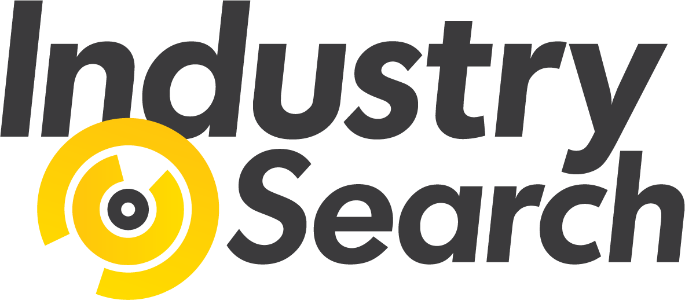

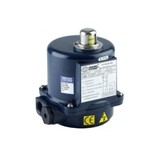

-160x160-state_article-rel-cat.png)

